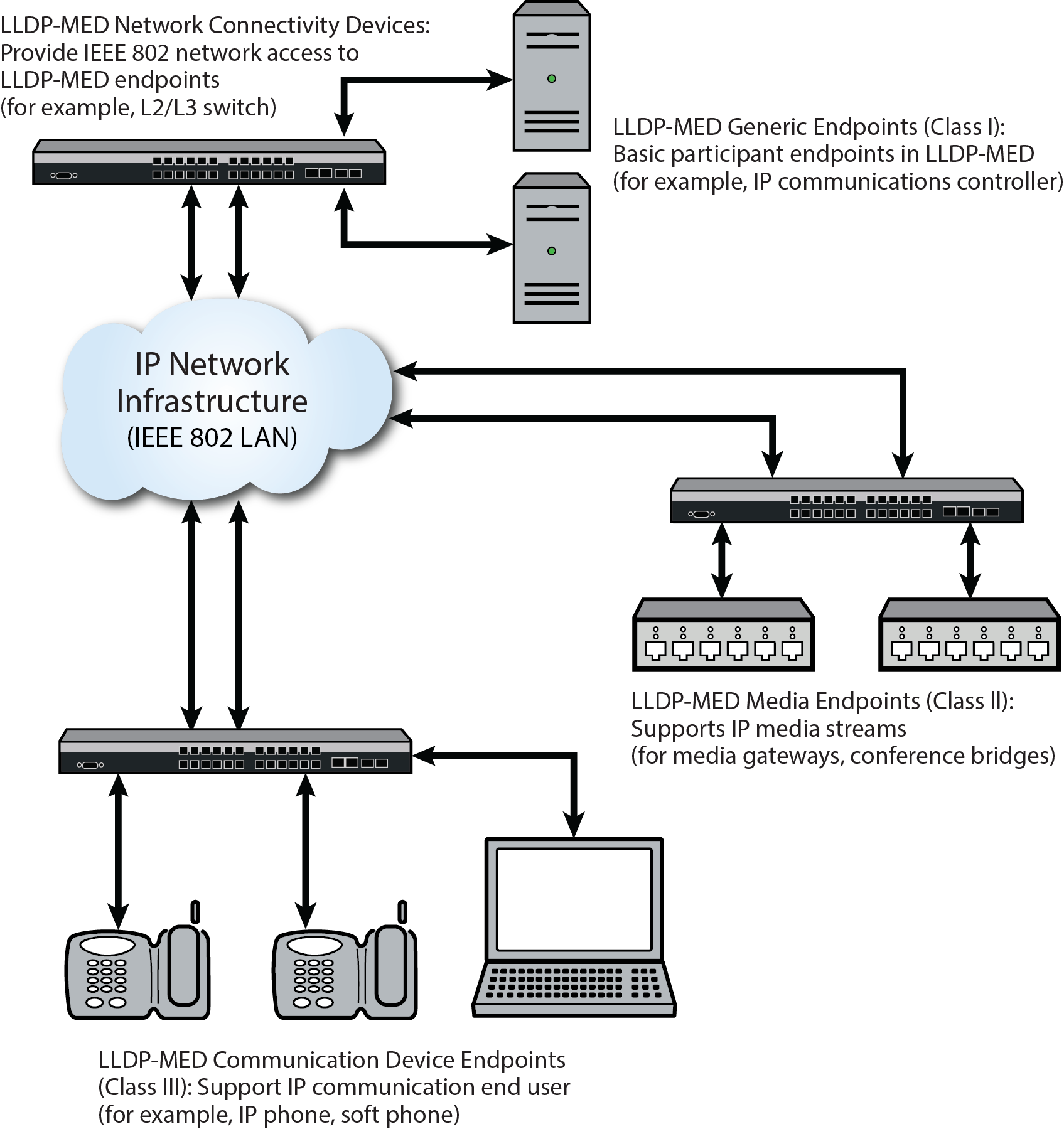LLDP-MED
The LLDP-Media Endpoint Discovery (LLDP-MED) extension of LLDP is defined to share information between media endpoint devices such as IP telephones, media gateways, media servers, and network connectivity devices.
Either LLDP or LLDP-MED, but not both, can be used on an interface between two devices. A switch port uses LLDP-MED when it detects that an LLDP-MED device is connected to it.
LLDP-MED provides the following benefits:
- Auto discovery of LAN policies, such as VLAN ID, 802.1p priority, and DiffServ codepoint settings, leading to plug-and-play networking.
- Device location and topology discovery, allowing creation of location databases and, in the case of VoIP, provision of E911 services.
- Extended and automated power management of Power over Ethernet endpoints
- Inventory management, allowing network administrators to track their network devices and to determine their characteristics, such as manufacturer, software and hardware versions, and serial or asset numbers.
There are two primary LLDP-MED device types (as shown in LLDP-MED):
- Network connectivity devices, which are LAN access devices such as LAN switch/router, bridge, repeater, wireless access point, or any device that supports the IEEE 802.1AB and MED extensions defined by the standard and can relay IEEE 802 frames via any method.
- Endpoint devices, which have three defined sub-types or classes:
- LLDP-MED Generic Endpoint (Class I) — All endpoint products that, while requiring the base LLDP discovery services defined in the standard, do not support IP media or act as an end-user communication device, such as IP communications controllers, other communication-related servers, or any device requiring basic services. Discovery services defined in this class include LAN configuration, device location, network policy, power management, and inventory management.
- LLDP-MED Media Endpoint (Class II) — All endpoint products that have IP media capabilities but that may not be associated with a particular end user, such as voice/media gateways, conference bridges, and media servers. Capabilities include all of the capabilities defined for Generic Endpoint (Class I) and are extended to include aspects related to media streaming. Discovery services defined in this class include media type specific network layer policy discovery.
- LLDP-MED Communication Endpoint (Class III) — All endpoint products that act as an endpoint user communication device supporting IP media. Capabilities include all of the capabilities defined for the Generic Endpoint (Class I) and Media Endpoint (Class II) devices and are extended to include aspects related to end user devices, such as IP phones, PC-based soft phones, and other communication devices that directly support the end user.


 Print
this page
Print
this page Email this topic
Email this topic Feedback
Feedback